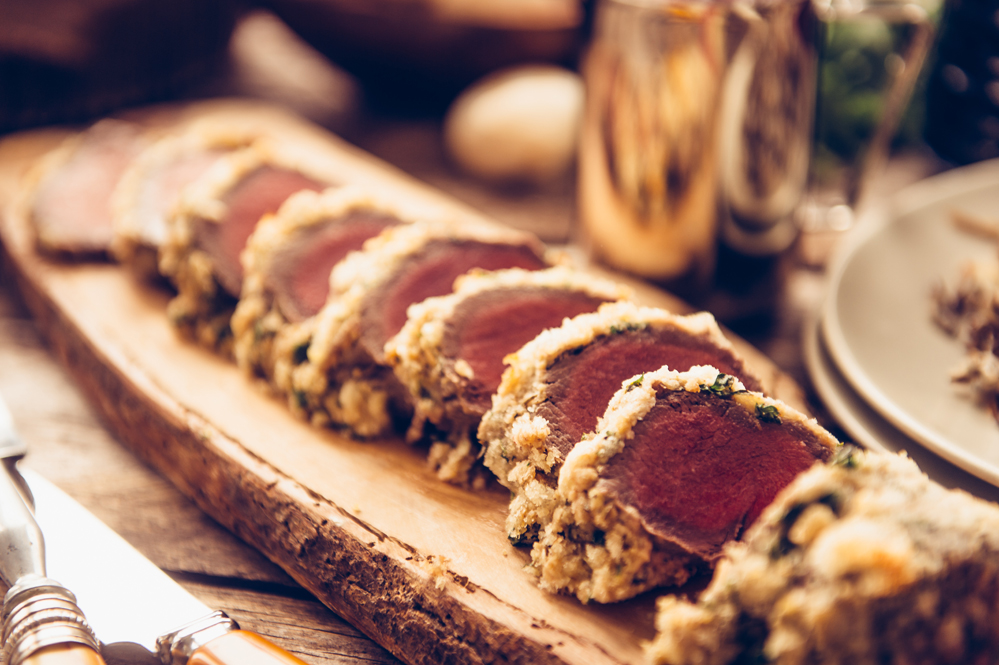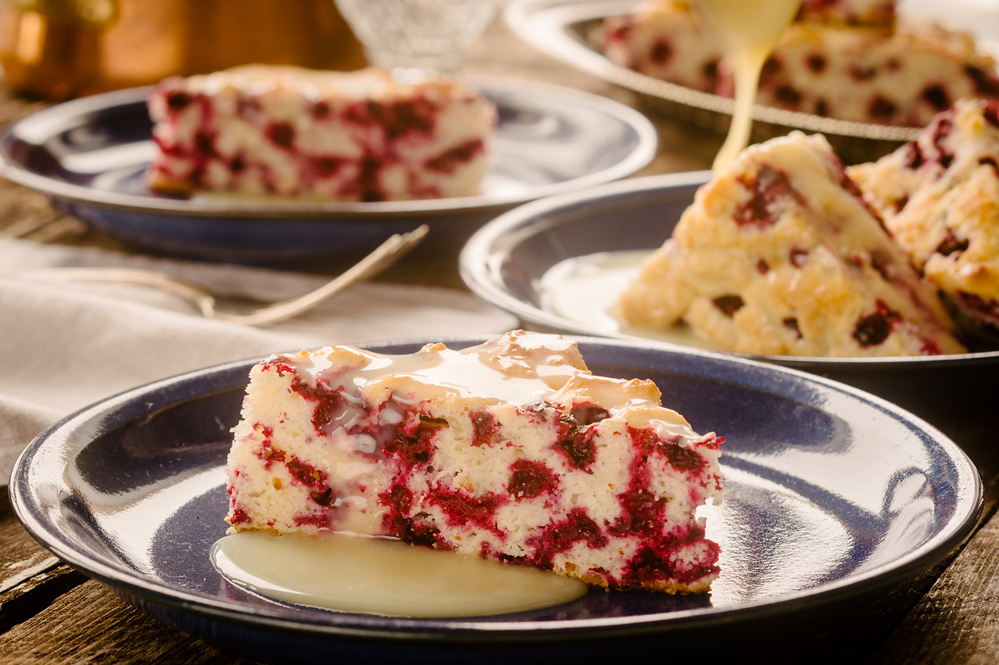At Churchill Wild we take great pride in the culinary experience we offer, but we never could have imagined that photos of the dishes we serve at our lodges would look good enough to eat in print. That’s exactly what resulted from our recent food styling photo shoot.
Maybe it was the main human ingredients, Shel Zolkewich and Ian McCausland, who we later discovered had been blended together in the past to produce the perfect presentation.
“We’ve worked together for over 30 years,” said Zolkewich, who is a journalist by trade. “When I first worked for the weekly papers in Winnipeg, Ian showed up on some of the assignments as a stringer to take photos. Since then we’ve probably done a hundred jobs together in publications and magazines. He shot my wedding. I shot his.”
Both Zolkewich, the writer, and McCausland, the photographer, have also spent much of their lives in the outdoors of northern Canada, where many of the recipes we use at the Churchill Wild lodges were born.
Zolkewich’s grandparents had farms in the Interlake and she grew up fishing, hiking and generally spending much family time outside. She also worked for Ducks Unlimited for 10 years, which continued to fire her passion for the outdoors. From there her working life started to move a little more in the direction of marketing, which included a consulting contract with Travel Manitoba and visits to a number of hunting and fishing lodges. Zolkewich had also ventured to northern lodges on her own as a travel writer previous to that.
But what about cooking skills? Do you have to be a good cook to be a food stylist?
“I’m not a chef,” said Zolkewich modestly when asked about her cooking skills. (She was certainly good enough to keep our guests very happy during one of her stays at our lodges.) “And I’ve never had any formal training. But I’m Ukrainian and when you’re Ukrainian food is never far away.
“So I’ve developed a real passion for food, for cooking and for exploring all kinds of food. I’m a huge fan of foraging, picking berries, mushrooms, gardening. I just love that whole idea of being able to harvest something on your own, process it, cook it and feed it to your friends and family. I just enjoy the whole process from beginning to end.”
Zolkewich’s relationship with Churchill Wild actually extends back 30 years to the Webber family, and in particular to Helen Webber, co-author of the Blueberries and Polar Bears cookbook series along with partner Marie Woolsey, and mother of Churchill Wild co-founder Jeanne Reimer.
“I remember going to the launch of their cookbooks, before I knew anything about the lodges,” said Zolkewich. “It was way back. But their whole collection of recipe books was the kind of food I liked and the results were always excellent. It’s the way I cook, and the things that I love. To this day, 25 years or so later, those cookbooks are the most used books in my collection, which you can imagine is quite extensive by this point.”
So it helped that Zolkewich was familiar with both the Churchill Wild recipes and their tourism products when she was approached about doing a food styling shoot.
“I’ve caught my own lake trout and I’ve picked my own Arctic cranberries,” said Zolkewich. “So I kind of knew the path of these foods. I’d developed a love for photography over the years and I’d also worked as a food writer for a while. I’d try out a recipe. I’d cook it and it would look great and then I would photograph it. I learned that you couldn’t just shoot it on your kitchen table on a white plate. You had to dress it up. So this evolution just started happening.”
Zolkewich discovered the use of colour palettes, and learned that some dishes looked better on platters than plates. She tried different presentation methods and props to enhance the dishes, to the point where she actually became a food stylist that was good enough to be paid for her work. Her journey to becoming a food stylist was not simple, and also included work in video production and television commercials. Each had its own process in terms of what was needed to make food look fabulous.
Zolkewich’s love of food and photography, and her ability to share her creations on social media, also contributed to her love of food styling, and when it came time to do the photo shoot for Churchill Wild she instinctively knew what had to be done. White plates weren’t going to cut it. Food had to be prepared. Special props had to be found and arranged.
Wood, slate, old cutlery, she needed a rustic feel that would reflect the warm and cozy atmosphere at the lodges and the whole northern culinary experience. Something that would reflect the brand. She knew what she needed. Enter photographer Ian McCausland.
McCausland too, had spent much time in the north during his long career as professional photographer working for organizations such as The North West Company. He knew the people of the north, the culture, and the food. Where it comes from and how it was prepared.
“Ian does a lot of beautiful food work,” said Zolkewich. “He also does a lot of fashion work. And he understands that when it comes to a food styling job you almost have to look at it like you’re redecorating a room. It kind of has to have a theme and a look and feel that makes everything look like it belongs together. In this case the recipes and the lodges said northern Canada, so I didn’t want to put anything on white plates and make it feel too contemporary. It really required sort of a rustic feel. That’s why you see all kinds of wood and slate, cast iron and old cutlery. It had to have some vintage, some age, something sort of warm, cozy and inviting. Just like the lodges.”
Zolkewich went on to say that every job is different. If you’re doing something contemporary and you know it’s going to be on an application such as poster, maybe the shot needs to be on white linens. It might be the exact opposite of what was required for Churchill Wild.
Food styling is definitely an art.
“The first step is envisioning what the presentation should look like,” said Zolkewich. “Then there’s finding all the props and executing the shot. You don’t just go into a department store to get those things.”
And then there’s cooking the food, which Zolkewich did in this case, with ingredients you don’t use every day. And finally, there’s the challenge of making what you’ve cooked, look good.
“You have to have a result that looks like what people are going to have when they make it,” said Zolkewich. “And then there’s getting into the studio and making it work with the props and the lighting, the spacing in between items, the colours. Each dish is different. Sometimes we needed light blue and white, sometimes dark green, sometimes red and sometimes wood.”
Hours and hours of work can go into one shot.
“Even longer if you have to pick the cranberries off the tundra,” said Zolkewich with a smile in her voice.
“You see a beautiful photo of food and you think it looks great and so appetizing,” continued Zolkewich. “Then you sort of delve into why it’s working for you and why it’s hitting all your triggers. What you think it might smell like or taste like. There are a hundred little details that may have gone into that one photo. Like scouring the cupboards of other people’s kitchens and my own searching for all kinds of props to make it work.”
And it did. Beautifully.












